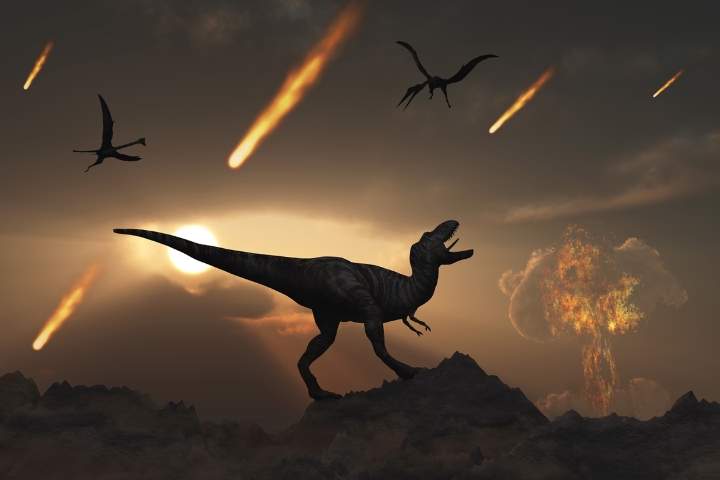Scientists have uncovered groundbreaking evidence that the asteroid which caused the extinction of the dinosaurs wasn’t the only space rock to hit Earth. According to new research, a second, smaller asteroid collided with Earth around the same time, leaving its mark on the planet.
The discovery came from a detailed scan of an underwater crater off the coast of Guinea, in West Africa. The crater, formed 66 million years ago during the end of the Cretaceous period, spans over five miles and was caused by an asteroid estimated to be a quarter-mile wide travelling at 45,000 miles per hour.
3D Seismic Imaging Reveals Impact’s True Scale
Using advanced 3D seismic imaging, researchers were able to map the crater’s structure and analyse the damage beneath the ocean floor.
They discovered that the impact had set off powerful tremors, liquefying the ocean floor and creating faults beneath the seabed.
Landslides extended thousands of square miles from the crater rim, and a towering tsunami, reaching heights of over 800 metres, surged across the Atlantic.
Dr. Uisdean Nicholson of Heriot-Watt University, who first discovered the crater in 2022, explained, “There are around 20 confirmed marine craters worldwide, but none with this level of detail.”
This study brings new insights into the catastrophic chain of events that may have led to mass extinction.
Clues of a Cluster of Asteroids
Although the exact location of the asteroid’s strike cannot be pinpointed, this discovery has fueled speculation that the event was part of a larger cluster of impacts that contributed to the extinction of the dinosaurs.
This second asteroid, while smaller, was still powerful enough to leave long-lasting scars on the Earth.
The research is published in Nature Communications Earth & Environment and offers a new dimension to our understanding of the catastrophic events that ended the age of the dinosaurs.




GIPHY App Key not set. Please check settings